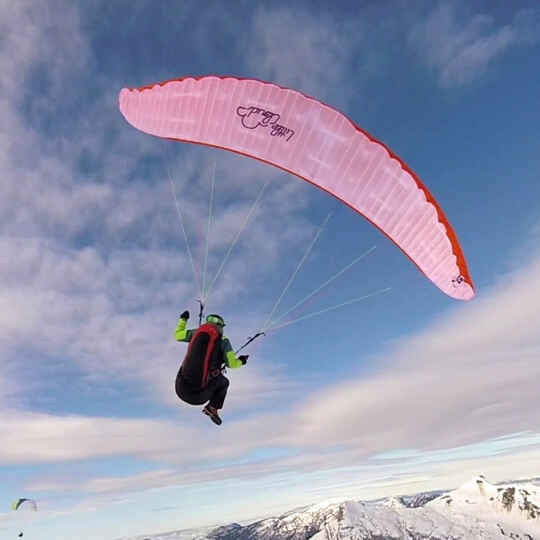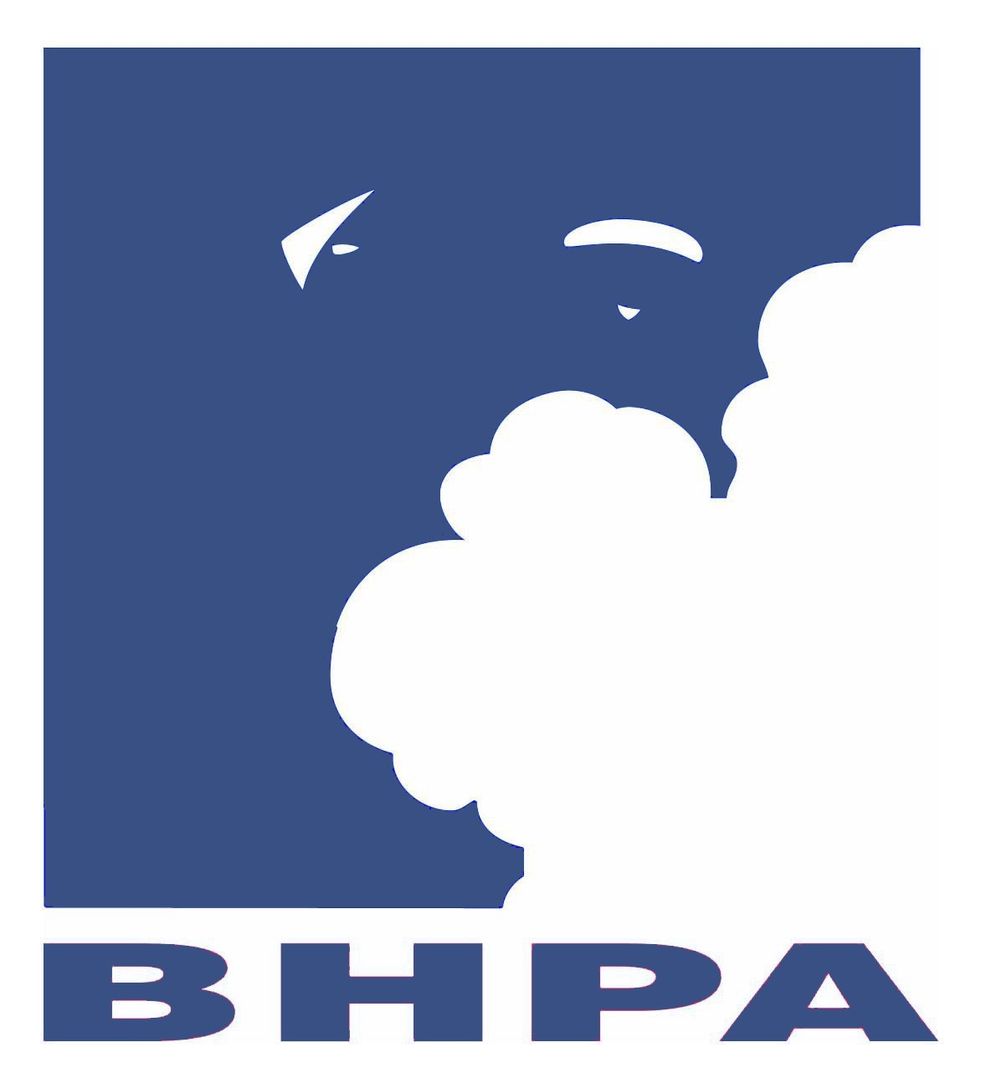Little Cloud MiniGoose & BabyGoose
Ref. #572
A cross-type wing for experienced pilots.
Please complete your purchase or empty your basket before continuing.
was £0.00
from £2,100.99
Product specification
The Mini Goose (13.5 m²) and Baby Goose (10.5 m²) are high-performance mini wings inspired by their big sister, the Goose Mk3.
A cross-type wing for experienced pilots.
They are part of the Turbo Soaring range, understand: strong wind soaring!
A more versatile and accessible version also exists in 16.5 and makes it possible to start flying in barely strong conditions for traditional paragliders.
A range which is therefore mainly intended for wind soaring sustained to very strong.
We had the chance to test the Mini and Baby in speed flying and mountain soaring.
The Mini Goose (13.5 m²) and Baby Goose (10.5 m²) are high-performance mini wings inspired by their big sister, the Goose Mk3, a cross-type wing for experienced pilots.
They are part of the Turbo Soaring range, understand: strong wind soaring!
A more versatile and accessible version also exists in 16.5 and makes it possible to start flying in barely strong conditions for traditional paragliders.
A range which is therefore mainly intended for wind soaring sustained to very strong.
We had the chance to test the Mini and Baby in speed flying and mountain soaring.
Behaviour
The Mini and Baby behave quite similarly, even if the Mini is obviously more accessible than the Baby.
In strong wind, the wing is made to avoid rising without pulling the A risers, which is very reassuring and securing. A smooth action on the A risers and it goes up well, without exceed too much. Do not restrain the rising too much on the brakes, and let it come to the zenith before braking.
Without wind, the wing will have to be assisted by the front risers to help its rising. As it is recommended on LC’s wings, the hands at 10h10 locked at the shoulders allow a clean and efficient rising. It is also preferable to spread the wing in an arc of circle to allow it to inflate from the center to the extremities.
The take off is very good and very fast, it requires of course a speeding without shyness but even the Baby takes off very quickly for its 10.5 m².
The glide is incredible, the wing flies like a paraglider with an impressive speed.
It reacts immediately to the aerology and goes up in the slightest thermal by transmitting well, nervously but without amplitude. With a good experience in thermal conditions and a good contol of this glider, you can hope to have fun during flights on sites in well established thermal conditions (for very confirmed pilots of course!).
The roll is super-powerful and nervous, whether with harness or beaks piloting, the wing is hyper reactive on this axis, and it will be necessary to go slowly at the beginning to assimilate it well. It is not uncomfortable or unmanageable for all that, and once you’ve integrated it, you can have a lot of fun.
Piloting at the rear risers, whether trimmed closed or open, is precise and efficient. It also makes it possible to measure the roll and avoid over-piloting when flying close to the ground.
The rears are a little more physical than brakes.
Design
The risers are, like all those in the LC range (Little Cloud), of good quality and finish. They are equipped with trims and accelerators, which is very practical for soaring, whether laminar or turbulent.
A press stud, standard at LC, allows you to connect the risers to each other during storage, facilitating untangling and allowing you to connect the wing to the pilot in strong winds without any riser twist, even before you unfold the wing.
You will notice the presence of a ears kit as on paragliders. Even if it sounds crazy or ridiculous, if the wind blows so hard that you want to go down and land, you’ll probably be happy to be able to do the ears.
The lines are sheathed in the lower part, unsheathed and dyneema on the upper part.
It will be necessary to take care of your detangling so as not to take off with a knot. On a 10.5m2 wing, this could have serious consequences.
However, the line configuration is quite simple, as it’s often the case with LC, and untangling is simple and easy.
The tissue is the unavoidable Dokdo high quality fabric, which has proven itself in the brand since its inception.
The barrels rotate with disconcerting ease once you have initiated a slight roll.
They are beautiful, have no tendency to screw on the floor, and there is only a little height loss.
If you go a little hard on the barrel with the Baby, it will quickly transformed into a double barrel so much inertia is strong. Don’t forget to keep enough margin!
Open trims, the wing gains in dive and the ground play is made easier.
It will be necessary to privilege a soft harness and rears piloting to fly very close to the ground.
The glide is still enormous and the proximity flight will be done preferably on gentle slopes.
Beware of hard wing overs with the brakes when you fly close to the ground: the roll is rapidly expanding and the glider quickly finds itself under the pilot. The inner wingtip then tends to close (especially open trims), and in response, the outer wingtip also, which is not a bad thing because it make the balance. It’s impressive and not very reassuring, but it’s safe, because the collapse doesn’t extend to the rest of the wing. That’s like closing the ears.
But if you fly very close to the ground, the rate of fall is then higher and you risk losing more altitude than expected, so be careful with that.
The low speeds are quite good, with a much longer breaks travel than it looks at first sight.
The stall point is sometimes difficult to identify at first, and it does not always warn. So go gradually for the take off landings on soaring flights.
The landing without wind is done relatively well, plan a very long straight final and be careful with the roll. Even with a nice flair and a deep rounding, you’ll still arrive a little fast (especially with the Baby), and it will be necessary to plan some steps of race.
Landing with open or half-open trims is almost easyer, but without big late turn to avoid the pitch surge. A large landing will be preferable, because the flair is endless. It will be necessary to dissipate the energy all the way to the end and pull all the breaks to finish the rounding.
Soaring
Although they are very versatile for experienced and expert pilots, soaring is still the domain of choice for these little Goose. They offer a really interesting usable wind range, and their performance allows them to fly in sustained wind, over small low-yielding landforms; where other mini-wings with a higher dive rate would not be successful.
Despite the impressive aspect ratio and reactivity of those machines, they prove to be more secure than it seems, and the reactions are finally no more exaggerated than their big sisters, or other performant wings of larger surface area.
We’ll still prefer to fly in laminar seaside winds rather than turbulent and gusty mountain winds, but as with most wings after all.





